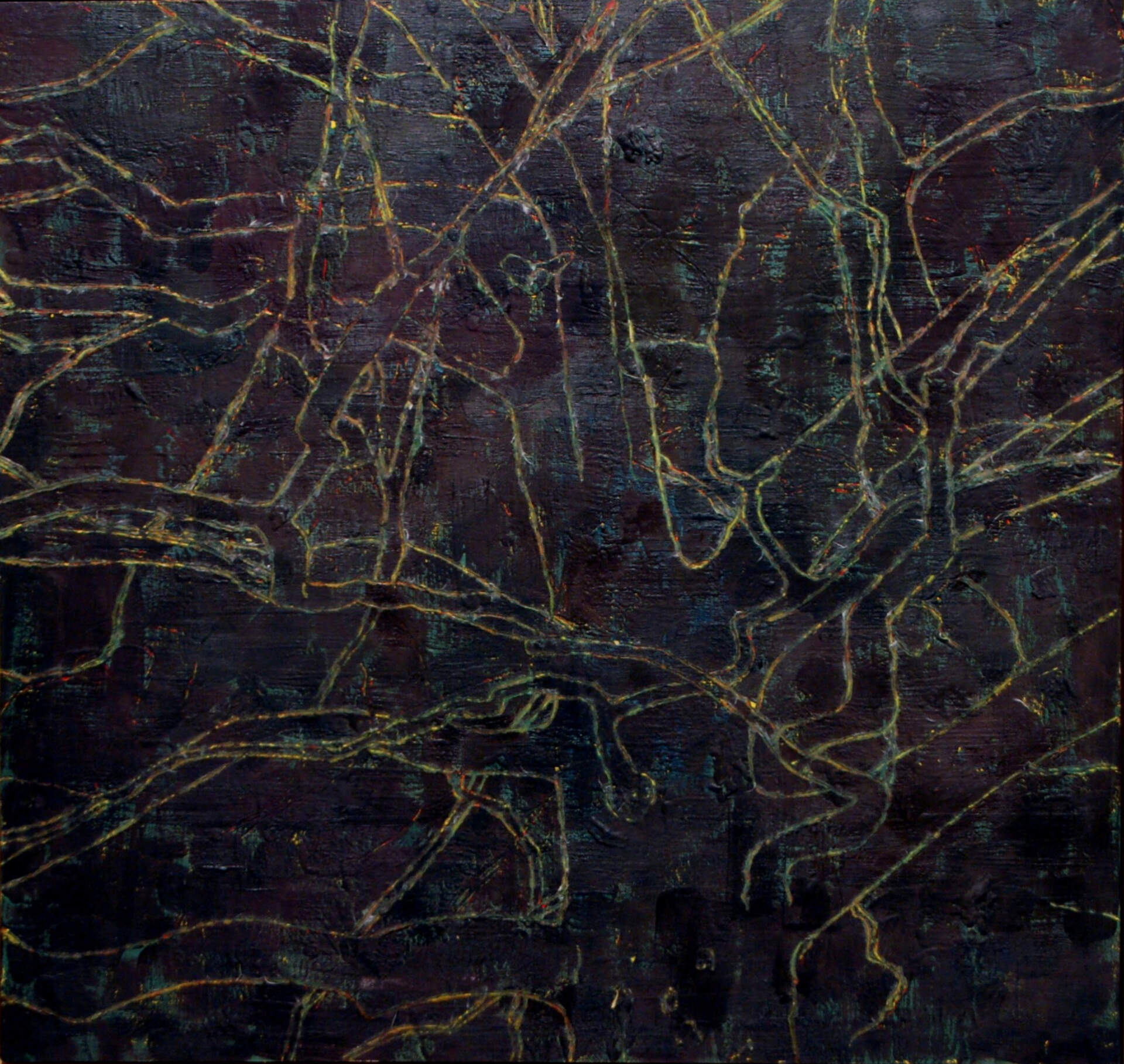
Mark Lavatelli (b. 1949), Tree Glyph #13, 2005; encaustic over oil on panel, 36 x 34 inches; Purchased, The Virginia Cuthbert Purchase Fund, 2007
Trees Interpreted: Charles Burchfield and Mark Lavatelli
Past
Apr 22, 2006 - Oct 22, 2006
In relation to Charles Burchfield, Mark Lavatelli might be described as a simpatico artist. The two speak different dialects of the same romantic language that uses nature to articulate both personal and universal human experience.
Charles Burchfield’s reverence for trees has been widely recognized. Within the natural domain, his trees exhibited unique characteristics distinguishing favorite deciduous and evergreen varieties of the mid-western and eastern regions of the U.S. Individually they became icons, such as a sun-draped American Chestnut tree representing the glory of summer solstice or the silhouette of the Eastern Hemlock serving as a pyramidal gateway to a transcendental, future realm. Often, too, they stood in place of humans, representing tenacity and nature’s cycles of life.
Mark Lavatelli, an artist working in Buffalo, also draws inspiration from trees, painting and drawing them in both representational and more abstracted compositions. He said, “I like trees because they are metaphors of human potential (reaching up and out, standing tall), of individuality, of vision, and ultimately, of consciousness.”
Lavatelli’s “treescapes,” including new works that had never been publicly shown before, were exhibited beside Burchfield drawings and paintings in a unique exhibition for the Burchfield galleries that welcomed critical analysis of two artists’ approaches to a common subject. The exhibition was curated by Burchfield Penney staff, working in concert with Lavatelli to pair works for compelling contrast. An illustrated exhibition brochure featured essays contributed by John Massier, Visual Arts Curator at Hallwalls Contemporary Arts Center, and Nancy Weekly, .Charles Cary Rumsey curator.